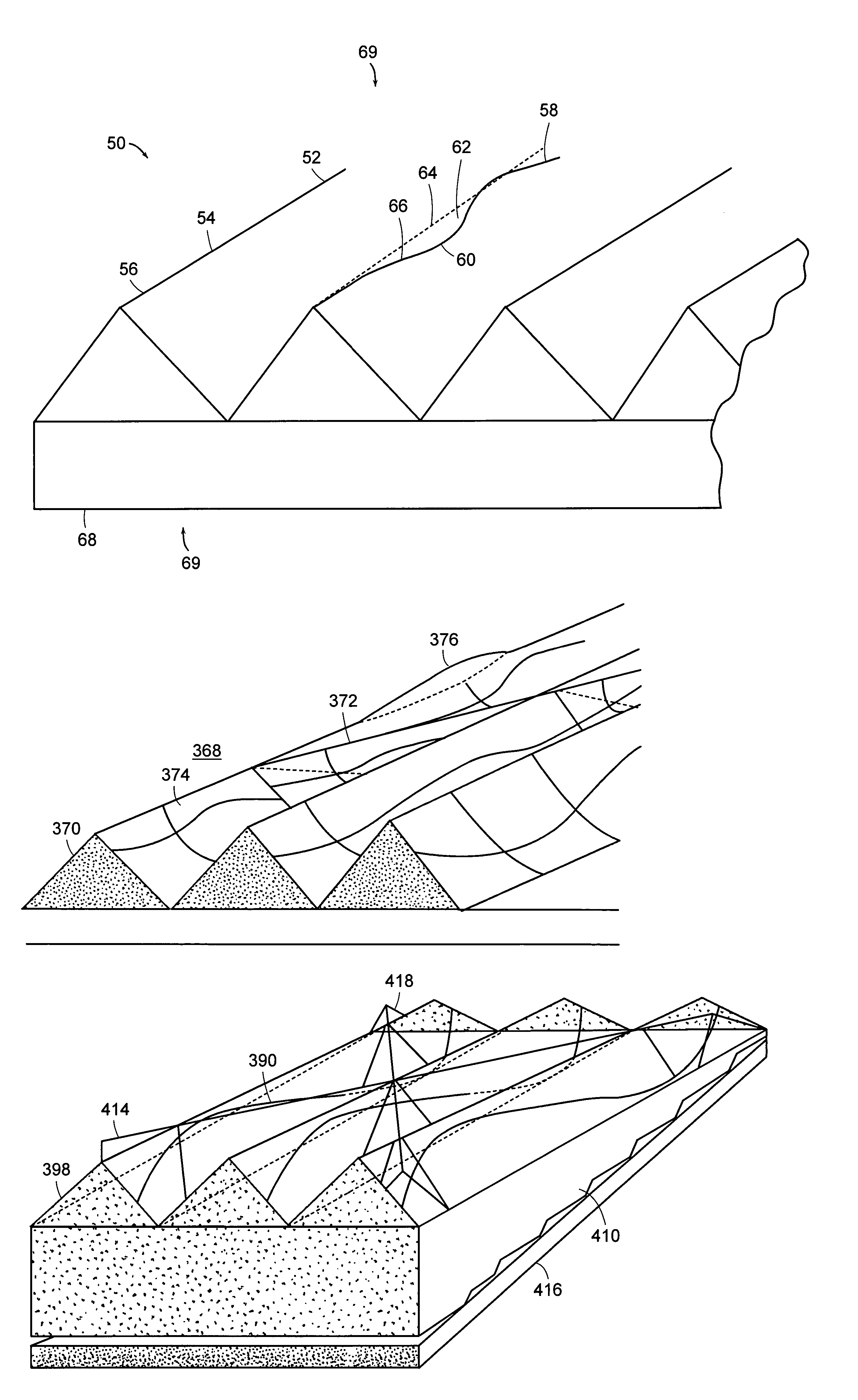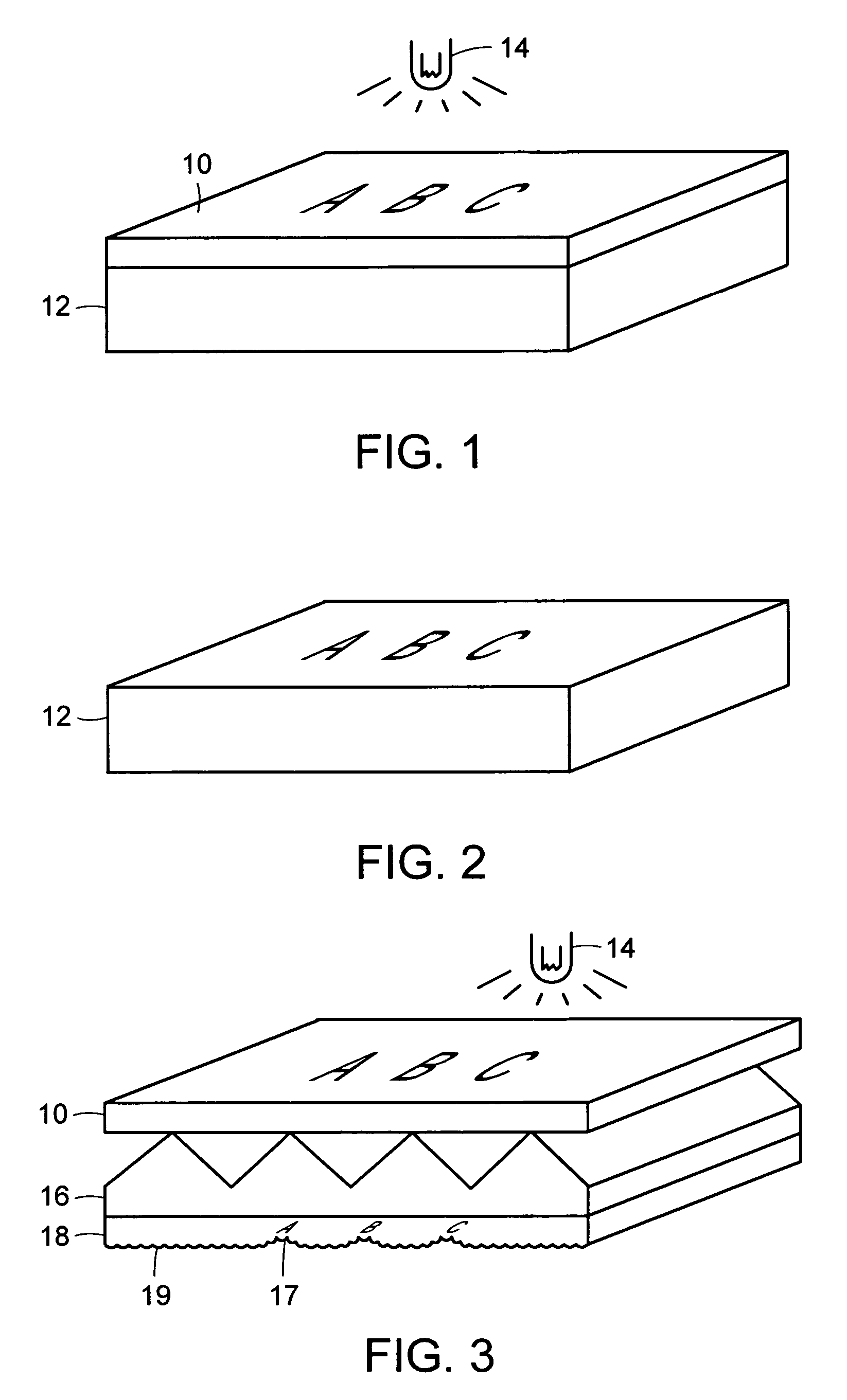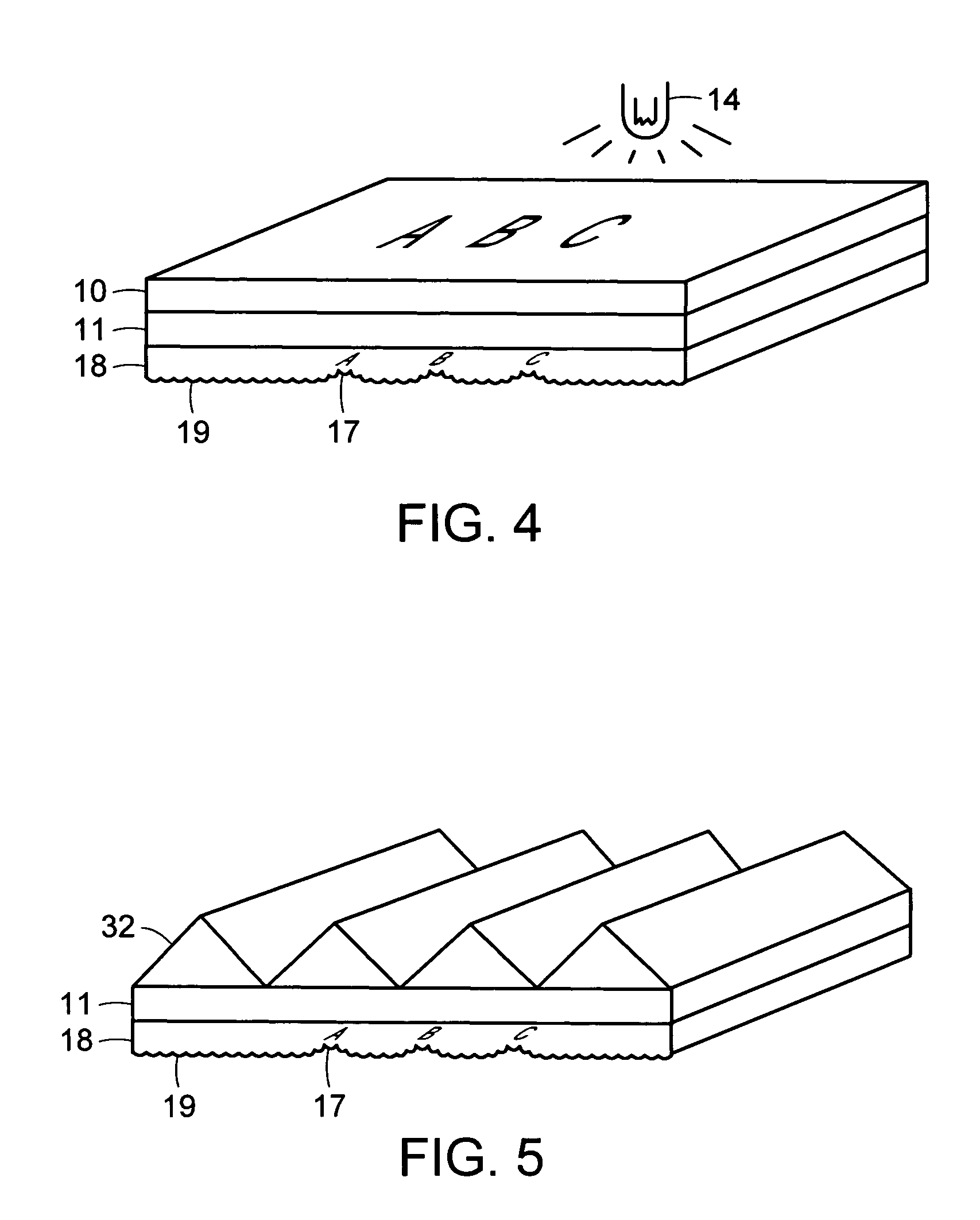Differentially-cured materials and process for forming same
a technology of differentially cured materials and process, applied in the direction of reflex reflectors, lighting and heating apparatus, instruments, etc., can solve problems such as discontinuity on the surface of the structur
- Summary
- Abstract
- Description
- Claims
- Application Information
AI Technical Summary
Benefits of technology
Problems solved by technology
Method used
Image
Examples
example 1
[0140]A polycarbonate substrate was covered with a number 30LC mask film (manufactured by Ivex Packaging Corporation) that had a blue colored “PEEL” pattern printed on it. Moth-eye structures were cast on the opposite side of the substrate and cured by ultraviolet radiation at a web speed of about twelve meters per minute (forty feet per minute) past two 157–236 watts / lineal centimeter (400–600 Watts / lineal inch) ultraviolet lamps manufactured by Eye Ultraviolet Corporation. After removing the mask film, the cured moth-eye structures retained the “PEEL” pattern that could not be readily seen at a zero degree viewing angle but were pronounced at about a fifteen degree viewing angle.
example 2
[0141]Alphanumeric images were handwritten onto the surface of a mask film on a cling mask sample of polycarbonate film manufactured by Rowland Technologies Incorporated. Commonly available felt tip marker pens were used to form the images. An ultraviolet curable coating of epoxy acrylate was applied to the other side of the polycarbonate film and cured under a 236 Watts per lineal centimeter (600 Watts per lineal inch) lamp at about 4.6 meters per minute (fifteen feet per minute). The mask film was removed and the cured coating was visually examined at various angles. The images that had been on the mask film were visible at shallow viewing angles in the cured coating.
example 3
[0142]FIG. 25 shows a plot of a surface profile with an interference microscope trace that was made across the surface of a film made with the pattern transfer process.
[0143]The height of the features is slightly less than one wavelength of red light. Red light wavelength is 632.8 nm (2.49×10−5 inches). The height of the features is approximately 500 to 900 nm (1.9685×10−5 to 3.5433×10−5 inches). The average height is about 640 nm (2.5197×10−5 inches).
[0144]The height and slope of the features caused some light deviation as the light passes through the film. However, the effect on LCD back light brightness appears to be positive by about a one percent gain. Additionally, these features can act as resting points for the prism peaks of collimating films as the films are stacked upon each other and therefore prevent the majority of the prism peaks from being damaged by abrasion.
[0145]FIG. 26 is similar to the embodiment of FIG. 13 and illustrates a visible random shaped surface that ca...
PUM
| Property | Measurement | Unit |
|---|---|---|
| angle | aaaaa | aaaaa |
| angle | aaaaa | aaaaa |
| included angle | aaaaa | aaaaa |
Abstract
Description
Claims
Application Information
 Login to View More
Login to View More - R&D
- Intellectual Property
- Life Sciences
- Materials
- Tech Scout
- Unparalleled Data Quality
- Higher Quality Content
- 60% Fewer Hallucinations
Browse by: Latest US Patents, China's latest patents, Technical Efficacy Thesaurus, Application Domain, Technology Topic, Popular Technical Reports.
© 2025 PatSnap. All rights reserved.Legal|Privacy policy|Modern Slavery Act Transparency Statement|Sitemap|About US| Contact US: help@patsnap.com



